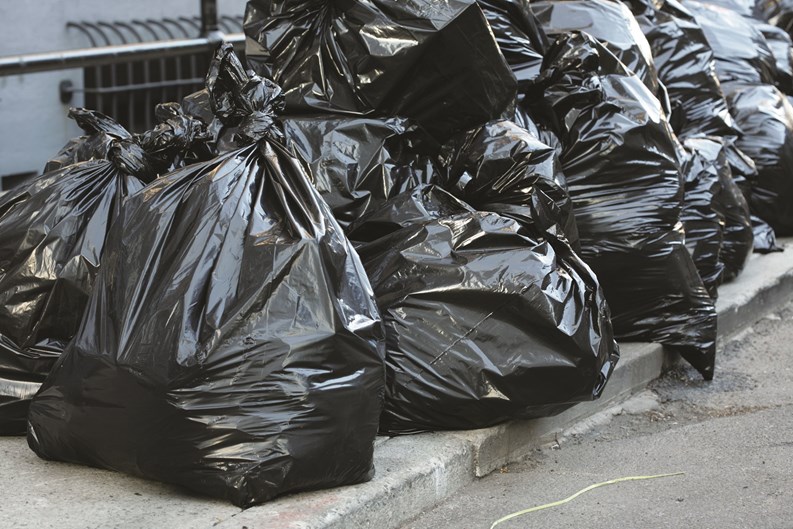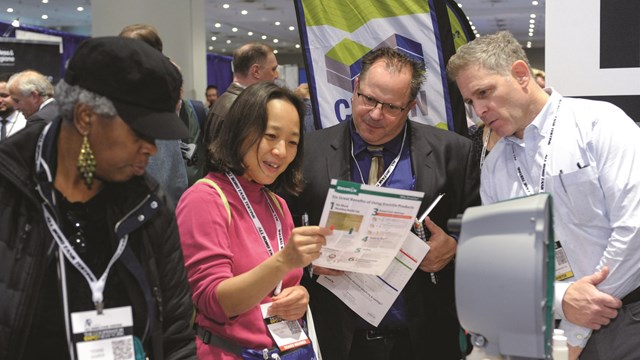In days gone by, when you opened something up, you simply threw away the packaging. You ate your dinner and threw away the scraps, and you tossed your ratty old sweatshirt, t-shirt or jeans in the dumpster when they had more holes in them than a chunk of Swiss cheese.
A Throw-Away Society
It’s not surprising then, that as a nation, Americans generate more waste than any other nation in the world with 4.6 pounds of municipal solid waste per person per day—fifty-five percent of which is contributed as residential garbage. It is estimated, for example, that Americans use 2,500,000 plastic bottles every hour, with the majority of them being thrown away.
In nearly every community, a variety of city and statewide initiatives exist to reduce the annual amount of garbage going into the waste stream. Recycling programs are in place for paper/cardboard and textiles, bottles and cans and electronic waste or e-waste. Most recently, composting programs have gained momentum in residential communities.
John Schert, director of the Hinkley Center for Solid & Hazardous Waste Management, in Gainesville, Florida, says “Property managers should, ideally, have a separate collection locations for their residents’ waste and their residents’ recyclables. Having a visible bin or compartment for paper, cardboard, plastic containers—such as soda or water bottles, laundry detergent containers—encourages more recycling. We also suggest that property managers hire reputable waste-hauling and recycling companies, to ensure that their wastes are transported to the appropriate places.”
The Cost of Recycling
Since the city of Chicago has slowly abolished refuse rebate programs—whereby owner-occupied units received condo rebates for the cost of refuse collection—many housing associations have begun looking for ways to establish other means of savings regarding the scavenger expense. And though condominium residents pay property taxes for services that include waste and recycling collections, the city does not, in fact, pick up from multiple family dwellings of more than four units.
“As a result of this, we have to contract privately for both collections,” says Faith Hart, board president of the condominium association at 345 West Fullerton Parkway in Chicago. “And so, I know of neighboring associations that seem to do no recycling at all!”
Knowing More is Better
From throwing away trash, to recycling and composting, educating the building staff and residents is key, and that education starts at the beginning—knowing where all of that garbage goes. And this means keeping the staff and residents up-to-date on changes in trash, composting and recycling laws. For example, industry experts estimate that U.S. consumers throw away 400 million units of electronic equipment—cell phone and computers for example—per year.
“All of our properties have separated recyclables,” says Rosemarie Wert, vice president and director of supervisors at Community Specialists in Chicago. “However, one property has gone much further. They spent a great deal of money on a program which included separating their trash chutes to accommodate recyclables on one side and trash on the other.
“Another of our properties does composting on the site of the building itself, and has also installed single-stream recycling systems in its trash rooms. Furthermore, by way of encouraging better practices all around, we will train members of our board for dealing with waste management, and publish profusely detailed lists of recyclables, making sure our boards accommodate their properties with bins for them in as many public areas as are reasonable.”
“When I became the property manager at 345 West Fullerton Parkway, eleven years ago,” Hart says, “we had two collections for recycling per week, and six collections for trash, even though our trash compactors are switched out only twice per week, and therefore need only two collections. It was all the remaining stuff that was being trashed that filled up the extra dumpster, which needed emptying almost every day. At that time, most of our cardboard went into the trash dumpster.”
“We started educating, both residents and staff, by signs and through our newsletter,” Hart explains. “We blocked off a section in our loading bay just for cardboard, which we were told by our hauler made up eighty percent of what was recycled. We continually told our residents that if they recycled more, we could save money. Our recycling collections cost less than our trash collections, because the recycling can be sold off to compensate for the cost of handling it. We also set up a small recycling center in our basement laundry room to handle things that needed recycling but which individuals rarely took to the designated handlers: compact fluorescent lamps (Home Depot); cell phones (Lincoln Park Zoo); CDs and DVDs (Best Buy); plastic shopping bags (supermarkets); rechargeable batteries (Chicago recycling center at Goose Island); paper shopping bags (thrift stores for reuse); bubblewrap (UPS for reuse).”
Cortney Cox, a property manager at Community Specialists, says his property undertakes an annual cleanout day: “On the recycling end of things,” Cox says, “we hire a large shredding truck so people can recycle paper products. We also have limited electronic recycling available at this event. Additionally, we bring in a moving company and representatives from Salvation Army to assist in donations.”
“The recent boom in online shopping and commerce we’ve seen translates into an increase in packaging material that needs to be disposed of for each of the associations that we manage,” says Keith J. Hales, president and managing broker at Hales Property Management in Chicago. “As a result, we continue to find that many residents fail to break down the boxes that their merchandise arrives in, thus causing waste receptacles to overflow. Some boards have even instituted fines for those residents who fail to break down their boxes.”
Education and continued communication of the issues seems to be the most effective way to reduce or consolidate waste. “Rather than training members of the associations we manage for proper dealing with of waste removal,” Hales says, “we serve as more of a guide with regards to the best practices in changing the behavior of residents to help reduce this issue overall. We continue to send out and post further education and communication regarding recycling and overall waste reduction to not only the board members, but also the residents.”
Hales concludes, “Having hands on and strong management of the specific issue will translate positively to residents, and add overall value to the building.”
Lisa Iannucci is a freelance writer and a frequent contributor to The Chicagoland Cooperator. Staff Writer Zak Block contributed to this article.







Leave a Comment